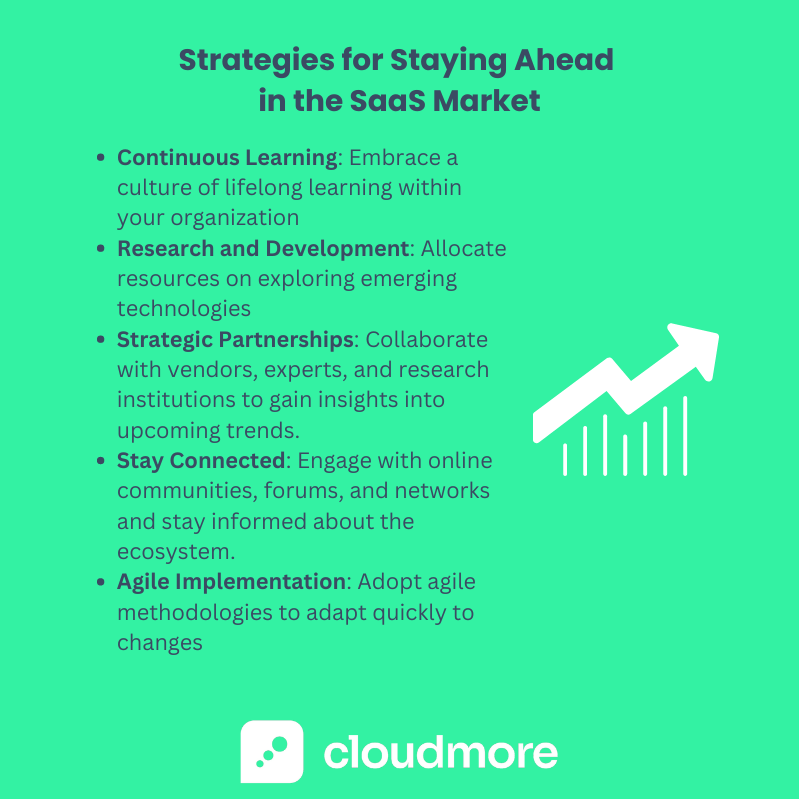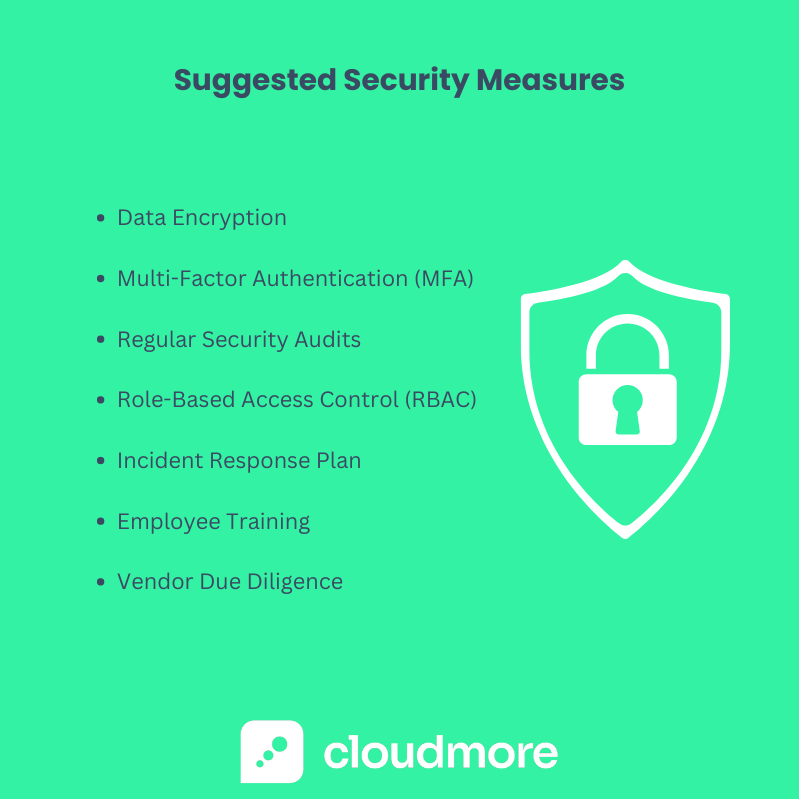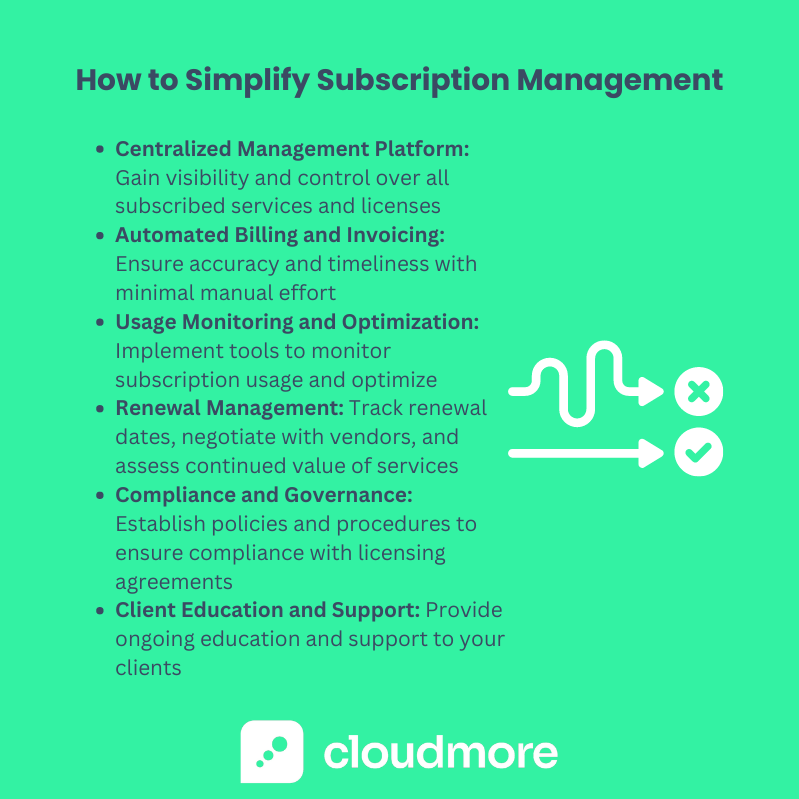8 Challenges MSPs Face in the SaaS-Driven Market and How to Overcome Them
In an era of technological innovation and digital transformation, the Software as a Service (SaaS) market stands at the forefront of revolutionizing businesses' operations.
Amidst this rapid evolution, Managed Service Providers (MSPs) play a pivotal role in guiding organizations through the complexities of SaaS adoption and maximizing the value of their investments.
In this article, we'll delve into the key challenges facing MSPs in the SaaS-driven landscape and explore actionable strategies for overcoming these obstacles. From keeping pace with technological advancements to addressing customer concerns about vendor lock-in, we'll uncover the insights and solutions essential for thriving in the dynamic world of SaaS.
Challenge 1: Keeping Up with Technological Advancements
In today's dynamic landscape, staying abreast of technological advancements is imperative for Managed Service Providers (MSPs) like you. As the SaaS market evolves rapidly, it presents opportunities and challenges that demand proactive adaptation strategies.
The Pace of Change in SaaS
The Software as a Service (SaaS) sector is characterized by its ever-changing nature. Innovations, updates, and enhancements emerge frequently, reshaping how businesses operate. The possibilities are endless, from AI-driven analytics to blockchain integration, but so are the challenges.
Strategies for Staying Ahead
To ensure you remain at the forefront of technological advancements, consider implementing the following strategies:
- Continuous Learning: Embrace a culture of lifelong learning within your organization. Encourage your team to participate in training programs, workshops, and industry conferences to keep their skills sharp and up-to-date.
- Invest in Research and Development: Allocate resources to research and development initiatives focused on exploring emerging technologies and their potential applications in your services.
- Forge Strategic Partnerships: Collaborate with technology vendors, industry experts, and research institutions to gain insights into upcoming trends and access cutting-edge solutions.
- Stay Connected: Engage with online communities, forums, and professional networks to exchange knowledge, share best practices, and stay informed about the latest developments in the SaaS ecosystem.
- Agile Implementation: Adopt agile methodologies to adapt quickly to changes and efficiently integrate new technologies into your service offerings.
- Focus on Specialization: Instead of trying to master all technologies, consider specializing in niche areas where you can excel and provide exceptional value to your clients.

By proactively embracing these strategies, you can position your MSP firm as a trusted advisor capable of navigating the complexities of the SaaS landscape with confidence and agility. Stay tuned as we delve deeper into the challenges and opportunities awaiting MSPs in the SaaS-driven market.
Challenge 2: Managing Complex Integrations
In Managed Service Providers (MSPs), navigating the intricate web of integrations poses a significant challenge. As businesses increasingly rely on diverse SaaS solutions to drive their operations, effectively managing and streamlining integrations becomes paramount.
The Complexity of SaaS Ecosystems
SaaS ecosystems are multifaceted landscapes comprising myriad interconnected applications, each serving a specific purpose. However, this complexity often leads to integration challenges, including compatibility issues, data silos, and workflow disruptions.
Streamlining Integration Processes
To overcome the hurdles associated with managing complex integrations, consider implementing the following strategies:
- Comprehensive Assessment: Conduct a thorough assessment of your client's existing IT infrastructure and SaaS stack to identify potential integration points and compatibility issues.
- Standardization: Standardize integration processes and protocols across your client base to streamline implementation and maintenance efforts.
- API Integration: Leverage Application Programming Interfaces (APIs) to facilitate seamless communication and data exchange between disparate systems.
- Automation: Invest in automation tools and platforms to automate repetitive integration tasks, reduce manual errors, and improve efficiency.
- Interoperability Testing: Prioritize interoperability testing to ensure that integrated systems function seamlessly and deliver the desired outcomes.
- Collaborative Approach: Collaborate with your team, clients, and SaaS vendors to co-create integration solutions that meet specific business requirements.
Adopting a proactive approach to managing complex integrations can enhance the interoperability and efficiency of your clients' SaaS ecosystems, ultimately driving greater value and satisfaction. Stay tuned as we explore more challenges and solutions facing MSPs in the SaaS-driven market.
Challenge 3: Ensuring Data Security and Compliance
In today's digital age, safeguarding sensitive data and ensuring compliance with regulatory standards are top priorities for Managed Service Providers (MSPs) like you. As businesses entrust their critical information to SaaS solutions, the need for robust security measures has never been greater.
Heightened Security Risks in the SaaS Landscape
The proliferation of SaaS applications introduces many security risks, including data breaches, unauthorized access, and compliance violations. With cyber threats evolving rapidly, MSPs must remain vigilant and proactive in mitigating potential security vulnerabilities.
Implementing Robust Security Measures
To fortify your clients' defenses and maintain compliance with industry regulations, consider implementing the following security measures:
- Data Encryption: Encrypt sensitive data both in transit and at rest to prevent unauthorized access and safeguard confidentiality.
- Multi-Factor Authentication (MFA): Implement MFA protocols to add an extra layer of security and mitigate the risk of unauthorized access to accounts and systems.
- Regular Security Audits: Conduct periodic security audits and assessments to identify vulnerabilities, assess risks, and ensure compliance with regulatory requirements.
- Role-Based Access Control (RBAC): Implement RBAC policies to restrict access to sensitive data and functionalities based on users' roles and responsibilities.
- Incident Response Plan: Develop and maintain a comprehensive incident response plan to effectively respond to security incidents and minimize their impact on your client's operations.
- Employee Training: Provide security awareness training to your team members and clients to educate them about common threats, best practices, and compliance requirements.
- Vendor Due Diligence: Conduct thorough due diligence when selecting and vetting SaaS vendors to ensure they adhere to industry-standard security practices and compliance regulations.

By prioritizing data security and compliance, you can instill trust and confidence in your clients while safeguarding their valuable assets against potential threats and vulnerabilities.
Challenge 4: Maintaining Service Quality Amidst Scalability
As Managed Service Providers (MSPs), you understand the importance of delivering consistent, high-quality client services. However, maintaining service quality can become increasingly challenging as your business grows and scales. Let's explore strategies for striking the right balance between growth and service excellence.
Balancing Growth with Quality Service Delivery
Scaling your MSP business while ensuring exceptional service delivery requires careful planning and execution. It's essential to prioritize scalability without compromising on the quality of your offerings or the satisfaction of your clients.
Scalability Solutions for MSPs
To effectively manage scalability while upholding service quality, consider implementing the following solutions:
- Automated Processes: Invest in automation tools and workflows to streamline repetitive tasks, improve efficiency, and free up resources to focus on delivering value-added services.
- Scalable Infrastructure: Build a scalable infrastructure that can accommodate the growing needs of your clients without sacrificing performance or reliability. Cloud-based solutions offer flexibility and scalability to adapt to changing demands.
- Service Level Agreements (SLAs): Define clear SLAs with your clients, outlining service expectations, response times, and escalation procedures. Review and revise SLAs to ensure they align with your capabilities and objectives.
- Proactive Monitoring and Maintenance: Implement proactive monitoring and maintenance processes to identify and address issues before they impact your client's operations. Predictive analytics and AI-driven monitoring tools can help anticipate potential problems and prevent downtime.
- Resource Planning and Allocation: Optimize resource planning and allocation to ensure that you have the right people with the right skills available to meet your clients' needs, even during periods of rapid growth.
- Continuous Improvement: Foster a culture of continuous improvement within your organization, encouraging feedback, innovation, and learning from past experiences to refine your processes and enhance service delivery.
By adopting these scalability solutions, you can effectively navigate the challenges of growth while maintaining the high standards of service that set your MSP firm apart in the competitive market.
Challenge 5: Navigating Vendor Relationships and Partnerships
In the dynamic world of Managed Service Providers (MSPs), navigating vendor relationships and partnerships is essential for delivering comprehensive solutions to your clients. Let's explore how building collaborative solid partnerships and maximizing value from vendor relationships can drive success in your MSP business.
Building Strong Collaborative Partnerships
Establishing strong collaborative partnerships with technology vendors is critical to accessing cutting-edge solutions and staying ahead of the competition. By fostering mutually beneficial relationships, you can leverage the expertise and resources of your partners to deliver innovative services that meet the evolving needs of your clients.
Maximizing Value from Vendor Relationships
To extract maximum value from your vendor relationships, consider implementing the following strategies:
- Strategic Alignment: Align your business goals and objectives with your vendor partners to ensure synergy and mutual benefit. Communicate your expectations and priorities to foster a shared vision for success.
- Open Communication: Maintain open and transparent communication channels with your vendor partners, fostering trust, collaboration, and timely resolution of issues. Regularly engage in dialogue to share feedback, insights, and updates on market trends.
- Joint Business Planning: Collaborate with your vendor partners to develop joint business plans that outline shared objectives, strategies, and metrics for success. Establishing clear goals and milestones can drive alignment and accountability on both sides.
- Product Training and Certification: Invest in training and certification programs offered by your vendor partners to enhance your team's skills and expertise in implementing and supporting their solutions. Well-trained staff can deliver superior service to your clients and differentiate your offerings in the market.
- Co-Marketing Opportunities: Explore co-marketing opportunities with your vendor partners to increase brand visibility, generate leads, and expand your client base. Collaborative marketing initiatives such as webinars, events, and content partnerships can amplify your reach and impact.
- Value-Added Services: Leverage your vendor relationships to access value-added services, such as technical support, marketing resources, and solution customization, that can enhance the value proposition of your offerings and differentiate your MSP business in the market.
By building strong collaborative partnerships and maximizing value from your vendor relationships, you can strengthen your position as a trusted advisor and strategic partner to your clients, driving long-term success and growth in the competitive MSP landscape. Stay tuned as we explore more strategies for navigating the challenges of the SaaS-driven market.
Challenge 6: Addressing Customer Concerns About Vendor Lock-In
As a Managed Service Provider (MSP), you understand the importance of addressing your clients' concerns about vendor lock-in. Let's explore strategies for understanding and mitigating the risks associated with vendor lock-in while providing flexibility and portability solutions to empower your clients.
Understanding and Mitigating Vendor Lock-In Risks
Vendor lock-in is when a client becomes dependent on a particular vendor's products or services, making it difficult or costly to switch to alternative solutions. This can pose significant risks to your clients' businesses, including limited flexibility, increased costs, and reduced innovation. Understanding the root causes of vendor lock-in and proactively mitigating these risks can help your clients avoid being trapped by their technology providers.
Providing Flexibility and Portability Solutions
To address customer concerns about vendor lock-in and empower them with flexibility and portability, consider implementing the following solutions:
- Open Standards and Interoperability: Advocate for adopting open standards and interoperable technologies that enable seamless integration and compatibility with multiple vendors' solutions. This allows your clients to avoid vendor-specific dependencies and maintain flexibility in their technology stack.
- Multi-Cloud and Hybrid Deployments: Promote multi-cloud and hybrid deployment models that leverage multiple cloud providers and on-premises infrastructure to diversify your clients' technology portfolio and reduce dependency on any single vendor.
- Containerization and Microservices: Embrace containerization and microservices architectures to modularize applications and decouple dependencies, making migrating workloads between different environments and vendors easier.
- Data Liberation and Migration Tools: Offer data liberation and migration tools that facilitate the seamless transfer of data and workloads between different systems and vendors, enabling your clients to switch providers with minimal disruption to their operations.
- Exit Strategies and Contingency Planning: Develop comprehensive exit strategies and contingency plans in collaboration with your clients to prepare for the possibility of vendor transitions or service disruptions. This includes identifying alternative vendors, assessing migration costs, and establishing clear exit criteria and timelines.
By providing flexibility and portability solutions that empower clients to avoid vendor lock-in, you can strengthen your relationships and position your MSP business as a trusted advisor and strategic partner in their technology journey.
Challenge 7: Managing Subscription Management Complexity
As a Managed Service Provider (MSP), you're likely familiar with the growing complexity of subscription management in today's digital landscape. Let's explore the challenges posed by the proliferation of subscription models and strategies for simplifying subscription management processes to enhance efficiency and drive value for your clients.
The Growing Complexity of Subscription Models
The rise of Software as a Service (SaaS) and subscription-based business models has led to a proliferation of subscription offerings across various industries. However, this abundance of choices can also introduce complexity, making it challenging for businesses to manage their subscriptions effectively. From tracking usage and renewal dates to optimizing costs and ensuring compliance, subscription management requires careful attention to detail and robust processes.
Simplifying Subscription Management Processes
To streamline subscription management and alleviate the burden on your clients, consider implementing the following strategies:
- Centralized Management Platform: Invest in a centralized subscription management platform that provides visibility and control over all subscribed services and licenses. This allows you to consolidate billing, track usage, and manage renewals from a single interface, simplifying administration and reducing complexity.
- Automated Billing and Invoicing: Automate billing and invoicing processes to ensure accuracy and timeliness while minimizing manual effort. Implement recurring billing mechanisms and automated payment reminders to streamline the collection of subscription fees and reduce administrative overhead.
- Usage Monitoring and Optimization: Implement tools and processes to monitor subscription usage and identify opportunities for optimization. You can help your clients optimize their subscription spend and maximize ROI by analyzing usage patterns and identifying underutilized or redundant subscriptions.
- Renewal Management: Proactively manage subscription renewals by tracking renewal dates, negotiating terms with vendors, and assessing subscribed services' continued relevance and value. Develop renewal strategies aligned with your client's business objectives to ensure they make informed decisions about renewing or canceling subscriptions.
- Compliance and Governance: Establish policies and procedures to ensure compliance with licensing agreements, regulatory requirements, and internal governance standards. Regularly audit subscribed services to identify compliance gaps and address any issues proactively.
- Client Education and Support: Provide ongoing education and support to your clients to help them navigate the complexities of subscription management effectively. Offer training sessions, documentation, and proactive guidance to empower them to make informed decisions and optimize their subscription portfolio.

By simplifying subscription management processes and empowering your clients with the tools and support they need, you can enhance efficiency, reduce costs, and drive value in their subscription-based operations.
Challenge 8: Adapting to Evolving Customer Expectations
In the fast-paced world of Managed Service Providers (MSPs), adapting to evolving customer expectations is crucial for maintaining competitiveness and driving customer satisfaction. Let's explore how you can meet the dynamic needs of SaaS customers and implement strategies for customer-centric adaptation to stay ahead in the market.
Meeting the Dynamic Needs of SaaS Customers
SaaS customers increasingly demand flexible, scalable, and user-friendly solutions that can adapt to their evolving business requirements. From rapid deployment and seamless integration to personalized support and transparent pricing, meeting the diverse needs of SaaS customers requires agility and innovation.
Strategies for Customer-Centric Adaptation
To effectively adapt to evolving customer expectations and deliver exceptional service experiences, consider implementing the following strategies:
- Personalized Solutions: Tailor your services to meet each customer's unique needs and preferences, offering customized solutions that address their specific challenges and objectives.
- Proactive Communication: Stay connected with your customers through proactive communication channels, such as regular check-ins, status updates, and feedback sessions. Demonstrate your commitment to their success and responsiveness to their needs.
- Agile Development and Deployment: Embrace agile methodologies and rapid development cycles to deliver new features, updates, and enhancements to your customers quickly and efficiently. Prioritize customer feedback and iterate based on their input to continuously improve your offerings.
- Scalable Support Model: Implement a scalable support model that can accommodate the growing needs of your customers while maintaining high levels of responsiveness and quality. Leverage self-service options, knowledge bases, and community forums to empower customers to find answers to their questions independently.
- Value-Added Services: Beyond essential service delivery to offer value-added services that enhance the customer experience. This may include training programs, consulting services, performance optimization, and strategic guidance to help customers maximize the value of their investment in SaaS solutions.
- Continuous Innovation: Stay ahead by investing in research and development initiatives to anticipate emerging trends and technology advancements. Innovate proactively to introduce new solutions and capabilities that address evolving customer needs and differentiate your offerings in the market.
By implementing these customer-centric adaptation strategies, you can build stronger customer relationships, drive loyalty and retention, and position your MSP business as a trusted partner in their digital transformation journey. Stay tuned as we explore more insights and best practices for success in the SaaS-driven market.
Key Takeaways about MSP Challenges in the SaaS Market
Here are the key takeaways from our exploration of the challenges faced by Managed Service Providers (MSPs) in the SaaS market, along with corresponding solutions:
- Keeping Up with Technological Advancements: Embrace continuous learning and invest in research and development to stay ahead.
- Managing Complex Integrations: Standardize processes and leverage automation to streamline integration efforts.
- Ensuring Data Security and Compliance: Implement robust security measures and conduct regular audits to mitigate risks.
- Maintaining Service Quality Amidst Scalability: Adopt scalable infrastructure and agile methodologies to balance growth with quality service delivery.
- Navigating Vendor Relationships and Partnerships: Foster collaborative solid partnerships and maximize value from vendor relationships.
- Addressing Customer Concerns About Vendor Lock-In: Advocate for open standards and offer flexibility and portability solutions to mitigate risks.
- Managing Subscription Management Complexity: Invest in centralized management platforms and automate billing processes to simplify subscription management.
- Adapting to Evolving Customer Expectations: Personalize solutions, maintain proactive communication and innovate continuously to meet customer needs.
%20(1).png?width=799&height=799&name=The%208%20MSP%20Challenges%20(1)%20(1).png)
The Vital Role of MSPs in the SaaS-Driven Market
As MSPs, your role in the SaaS-driven market is indispensable. You serve as trusted advisors, guiding businesses through the complexities of technology adoption and ensuring they derive maximum value from their investments.
By proactively addressing challenges, embracing innovation, and delivering exceptional service experiences, you empower your clients to thrive in the digital era.
Your expertise and dedication are key drivers of success in the ever-evolving landscape of SaaS, shaping the future of business technology one solution at a time.
Share this
You May Also Like
These Related Stories

What Does Cloudmore's Onboarding Process Look Like?

The MSP Renaissance: Adapting to the SaaS and Subscription Revolution in IT Services


